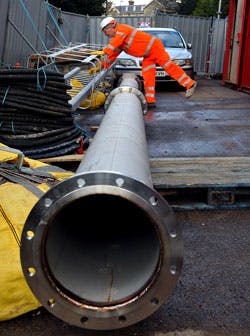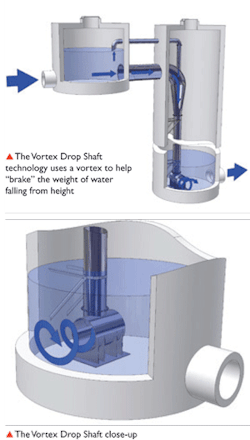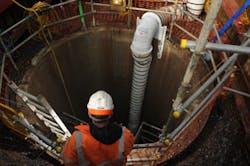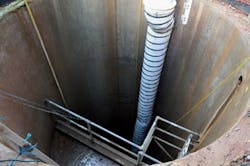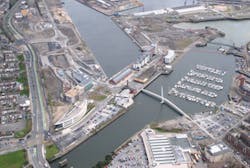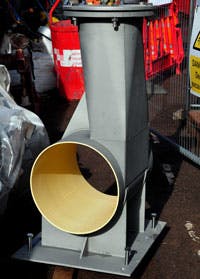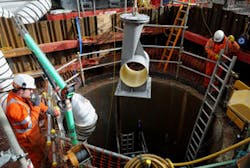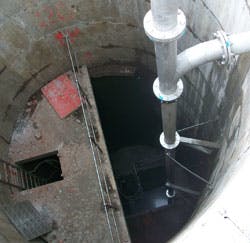More recent enhancements mean the technology now delivers high performance within a much more compact space than previously. Retrofit applications can be installed within an existing vertical access shaft construction, aiding safe personnel access and minimising additional construction.
In the UK city of Bristol, the existing drainage network was backing up after heavy rainfall due to the volume limits of the original discharge sewer. One solution available to Wessex Water to increase sewer and drainage capacity would have meant constructing a new 50 metre shaft through limestone bedrock.
Wessex Water project engineer Andy Roberts explains: "The existing sewers within the area were struggling during heavy rain. Excavating a new 50 metre shaft through the limestone bedrock to reach the sewer would have cost hundreds of thousands of pounds.
"Through the engineering contractors on the project, we discussed the concept of a drop pipe with Hydro International," he says. "They suggested inserting a Vortex Drop Shaft through the access shaft and constructing an Energy Dissipation Unit at the bottom."
A ‘ship-in-a-bottle' solution was devised to construct the drop shaft via the existing access shaft, avoiding major construction and minimising neighbourhood disruption.
The solution worked like keyhole surgery; all the components were flat packed and inserted down the hole to be re-assembled inside at the bottom; then the pipework was lowered down from above. The Drop Shaft is now discharging up to 680 litres/second (l/s) down a 50m vertical drop from a newly laid local sewer to the Northern Intercept Sewer.
Improving safety on new Middle East highway
For a new build stormwater handling application, as part of multimillion dollar infrastructure development in advance of the 2022 FIFA World Cup in Qatar, the same drop shaft technology is being employed to support drainage on the four-lane, 81km Salwa International Highway.
The drop shaft has been installed to control stormwater runoff over a drop of more than 6m from the expressway at Doha's Industrial Interchange.
While Qatar is overall a dry climate, winter rain storms can be intense and quickly cause localised flooding. To reduce the danger of surface water on the expressway at the interchange, large volumes of water falling from height must be controlled and drained away rapidly to avoid localised flooding.
